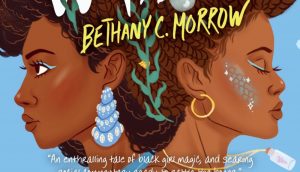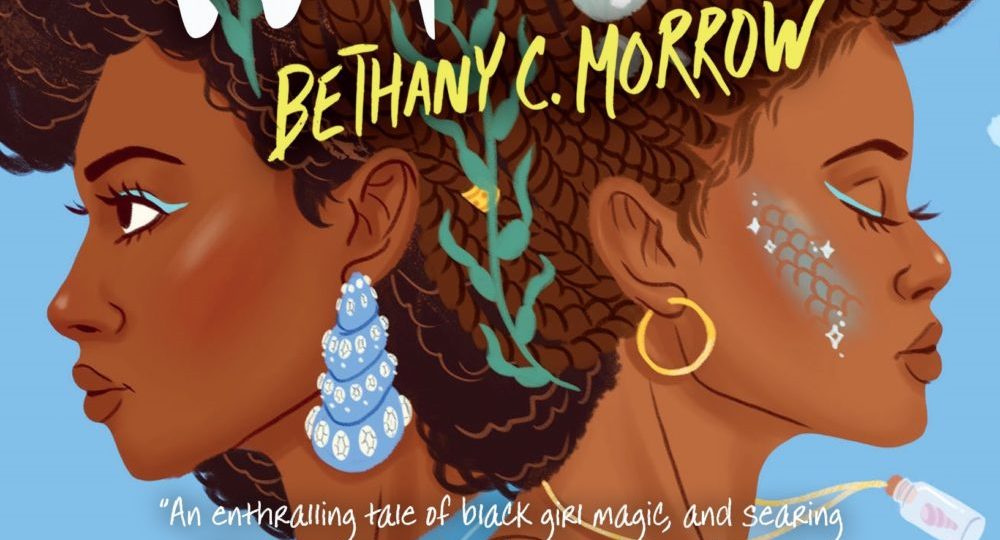
Bethany C. Morrow (2020), A Song Below Water (Tor Teen) — two adolescent sirens in and off-shore contemporary Portland, Oregon encounter challenges not unfamiliar to the adolescent and YA readers who will read the novel.
I CONFESS*: I am not in the demographic readership for whom Bethany C. Morrow wrote A Song Below Water. The usage of classical mythological sirens, however, make the book extraordinarily interesting. It seems worth sharing, sight unseen.
The goodreads page for A Song Below Water scores over 1,000 reviews since publication in Spring 2020, from an overwhelmingly female readership. The mainly 5- and 4-star reviews introduced me to the new term “misogynoir” and Black Girl Magic. And I am learning from continued browsing the importance of a stunning book cover such as Morrow’s book bears. But, most importantly, the reviews are reminding me that not all books in this world are written at me; reading outside my target is going to be good for me.
The Kirkus review criticizes the novel’s structure and pace without diminishing its overall positive assessment. Booklist’s reviewer calls it a “must-read for lovers of fantasy and contemporary stories alike.” And my favorite critic, the Children’s Librarian at the Provo City Library, knows that I’m a sucker for just about anything that adapts classical mythology and comes with her stamp of approval.
In classical mythology Sirens range from the highly particular — three avian daughters of a Muse or companions of Persephone transformed by Demeter — to the more generalized destroyers of short-sighted sailors or any men charmed by their dangerous wiles. The eroticization of Sirens has often seemed to me to be a development that did not necessarily have to happen. The more benign Starbucks Siren admittedly entices consumers to partake of her addictive product. Sirens traditionally are perhaps unfairly confused with Harpies, ever destructive creatures.
Morrow’s sirens seem to have concerns of their own. Their world seems to have turned the tables and the sirens are the ones now threatened with disaster. The opportunity to follow some fresh thinking with the Sirens myth comes, thus, as a welcome change. A summer in which I have read more shojo manga than an old-white-male classicist would be expected to — btw: Riyoko Ikeda’s Orufeusu no Mado is vastly underrated world literature! — somehow really ought to end with my reading this fantasy novel pitting two adolescent Black sirens against a hating and prejudiced (i.e. real) world.
— RTM
* The record shows that I opened my admiring review of Ally Condie’s Matched trilogy the very same way! (Mythmatters)



